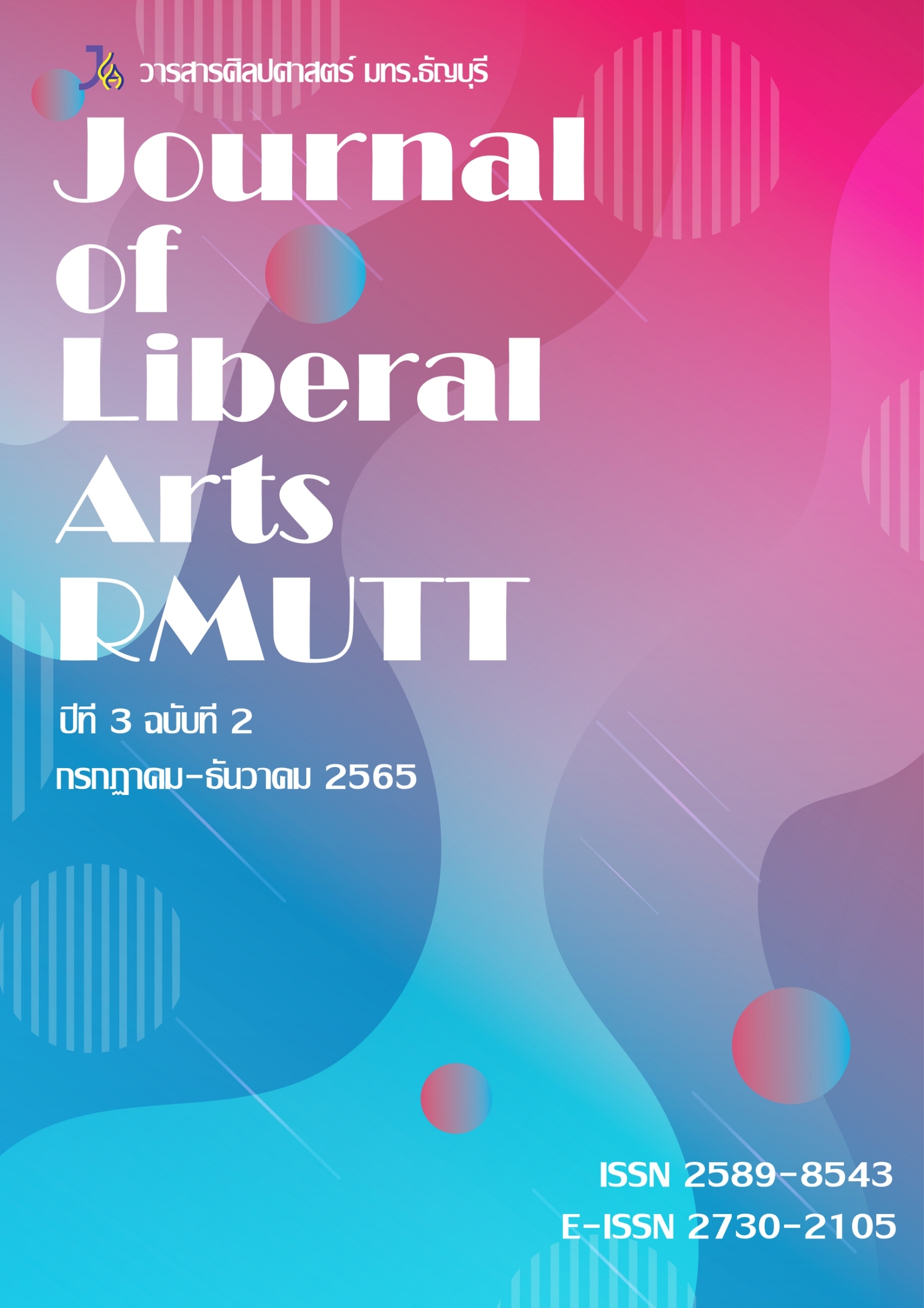The Preservation and Adaptation of Arab Cuisine Culture in Sukhumvit Area, Bangkok
Keywords:
Identity, adaptation, food culture, Arab cuisineAbstract
This article aimed to investigate the preservation and adaptation of Arab cuisine culture in the Sukhumvit area by employing qualitative research through participant observation and in-depth interviews. The target group is eight Arab restaurant entrepreneurs in Sukhumvit Soi 3 – 3/1. The study discovered that Arab cuisine identities included 1) rice or pita bread are the main ingredients, admiring served with meat like kabab. Arab dessert consisted of date palm and nuts (Fattah) served with tea or coffee after the main dish. 2) Arab tableware culture revealed that the meals are served on the floor. The menu was written in Arabic. Drinking water, vegetable or meat soup, fresh vegetables, and sauce are provided. Hands are used instead of utensils for having a meal. The cultural adaptation is divided into three periods. First (before 1987 to 2006), most Arabians rarely adapted their culture to further establishments. The taste remains initially and exclusively focuses on Arab customers. In the second period (2006 to 2019), international cuisine and healthy food became trendy among Thai customers, resulting in the adaptation. Thai and Muslim cuisine is served in Arab restaurants; they also promote their local dishes to Thai customers. In the current period (2019 to present), most entrepreneurs adapt their businesses to reach more customers during the COVID-19 crisis. Food applications are incorporated to help sustain and promote a better attitude of local people toward Arab cuisine.
References
พรรณงาม ชพานนท์. (2526). ภูมิศาสตร์วัฒนธรรม. ม.ป.ท.: ม.ป.พ.
มัญชรี โชติรสฐิติ. (2556). การปรับตัวข้ามวัฒนธรรมของนักเรียนไทยในต่างประเทศ. (วิทยานิพนธ์ศิลปศาสตรบัณฑิต).
สถาบันบัณฑิตพัฒนบริหารศาสตร์, กรุงเทพฯ. อัดสำเนา.
สำนักงานเขตวัฒนา. (2564). ข้อมูลทางกายภาพ. สืบค้น 20 พฤศจิกายน 2564, จาก https://webportal.bangkok.go.th/ vadhana
สุธิพร บุญมาก. (2556). ร้านอาหารไทยในประเทศออสเตรเลีย: ภาพสะท้อน “ความเป็นไทย” และ “การปรับตัว”.
วารสารศิลปศาสตร์ มหาวิทยาลัยสงขลานครินทร์ วิทยาลัยเขตหาดใหญ่, 5(1), 90-103.
สุรศักดิ์ บุญอาจ. (2558). กระบวนการปรับตัวทางวัฒนธรรมของนักศึกษาลาวและกัมพูชาในมหาวิทยาลัยอุบลราชธานี.
อุบลราชธานี: มหาวิทยาลัยอุบลราชธานี.
Möhring, M. (2016). GESCHMACK IST SO WANDELBAR WIE DIE IDENTITÄT. Retrieved on November 6,
, from https://www.goethe.de/ins/th/de/kul/mag/20866343.html
Obeidat, B. (2002). Food Habits of Arab Students Living in the United States. (Master’s Thesis).
Nutritional Sciences Texas Tech University, Lubbock.
Petzen, B. (2020). Middle Eastern Food: Six Lenses. The Geography Teacher, 17(3), 94-103.
Unicomb, M. (2021). From doner to hummus, the Middle Eastern foods Europe loves. Retrieved on July
, 2022, from https://www.middleeasteye.net/discover/middle-east-food-doner-hummus-europe-loves
Downloads
Published
How to Cite
Issue
Section
License
Copyright (c) 2022 Journal of Liberal Arts RMUTT

This work is licensed under a Creative Commons Attribution-NonCommercial-NoDerivatives 4.0 International License.








